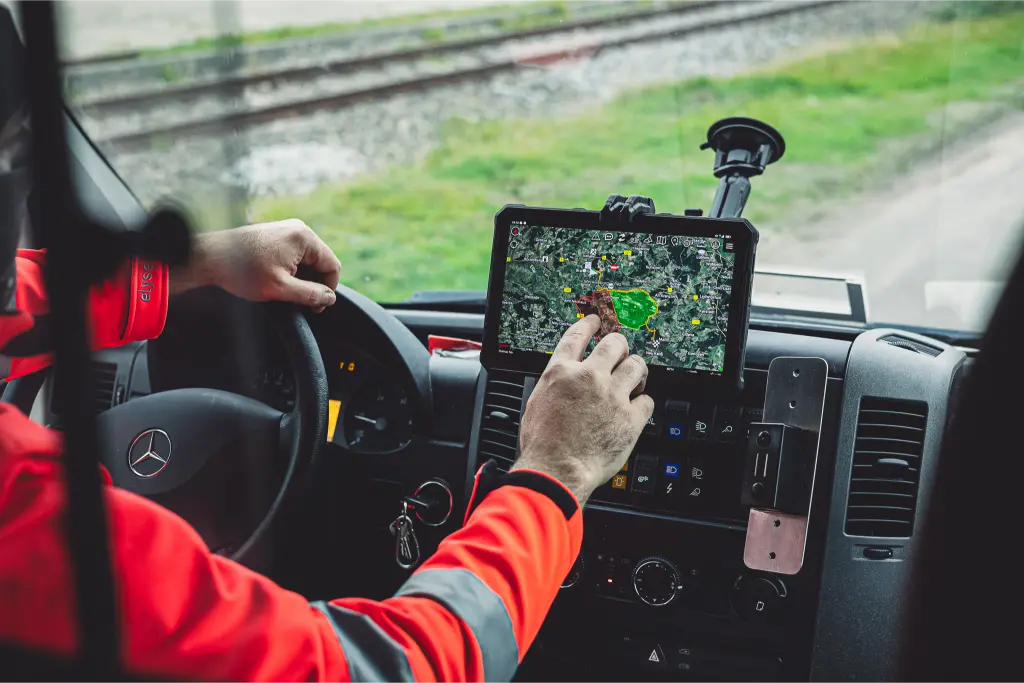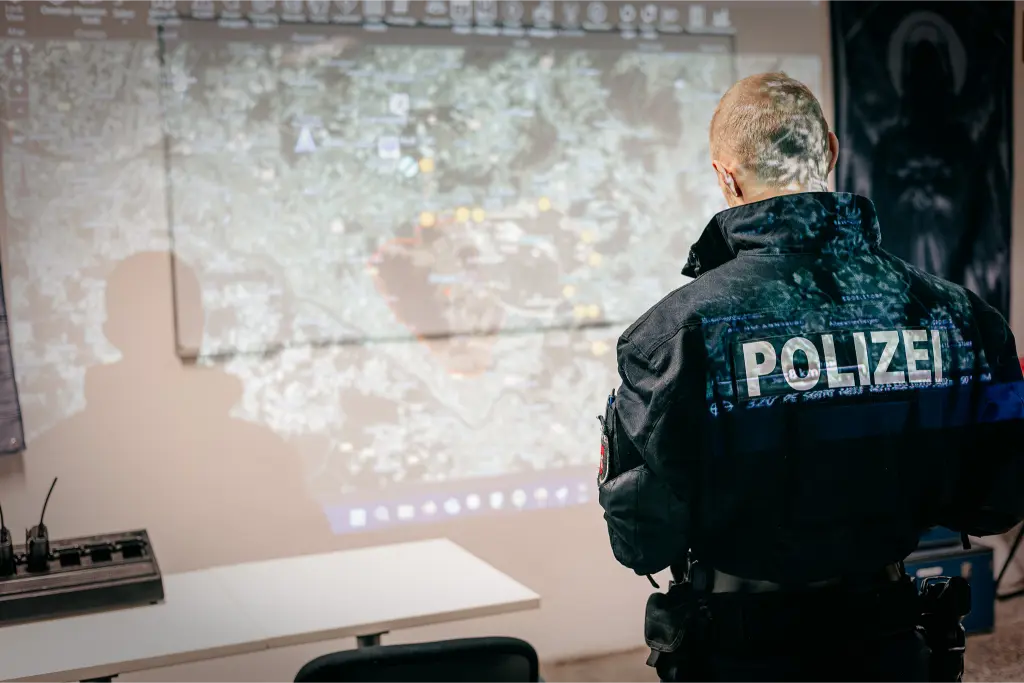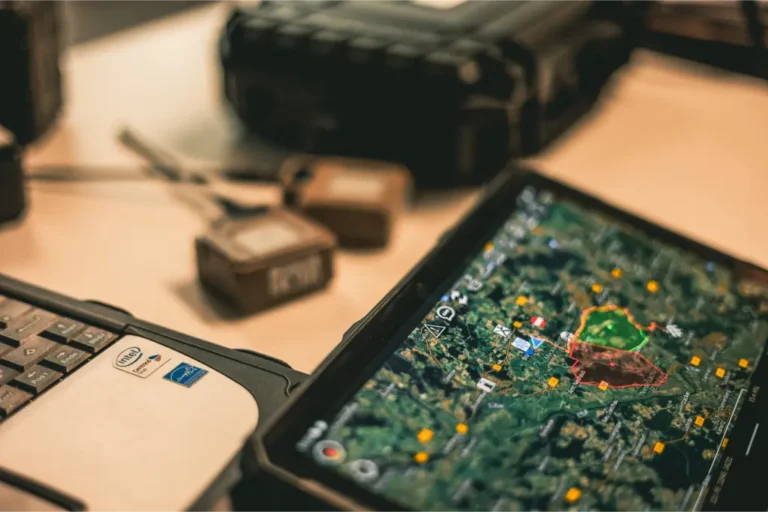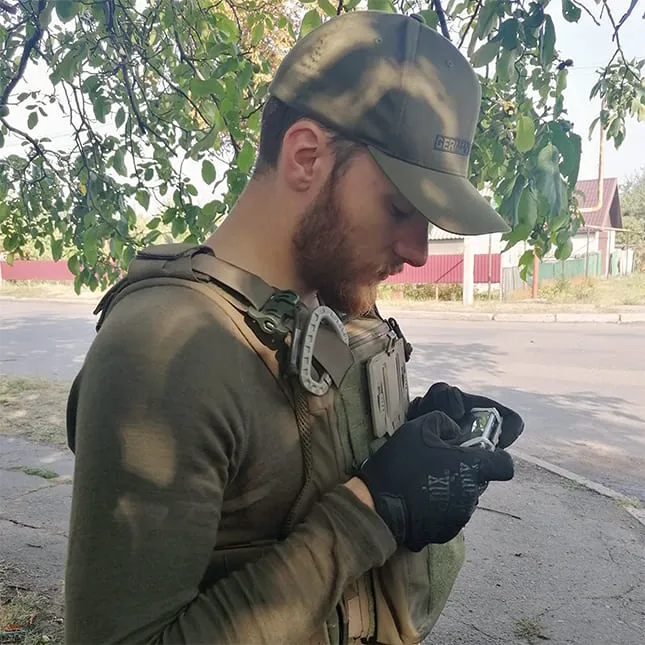The Android Team Awareness Kit (ATAK) is a revolutionary tool for geospatial team communication and situational awareness. Originally developed for military operations, it has now been adopted in numerous civilian and professional applications. ATAK enables organizations, authorities, and teams to visualize, share, and collaboratively analyze data in real-time.
What is the Android Team Awareness Kit (ATAK)?
ATAK is an open-source software that runs on Android devices, helping teams navigate and communicate in dynamic, often complex situations. At its core is geospatial visualization: users can display and share maps, locations, markers, sensor data, and other information in real-time on a digital interface.
ATAK is continuously evolving, benefiting from an active community of developers, organizations, and government agencies. This open-source foundation ensures that new technologies and features can be seamlessly integrated over time.
Technical Foundations: What Powers ATAK?
1. Open-Source Architecture
ATAK is an open-source software developed and continuously improved by the Air Force Research Laboratory (AFRL). This open architecture offers several advantages:
- Accessibility: Developers worldwide can contribute to the system’s evolution.
- Flexibility: Organizations can create their own customizations and extensions.
- Cost Savings: Unlike many proprietary solutions, there are no licensing fees.
The foundation of ATAK is the Java-based Android framework, ensuring high compatibility with Android devices across a range of performance capabilities.
2. Network Communication
Communication between ATAK devices relies on standardized protocols such as:
- COT (Cursor on Target): This protocol facilitates efficient exchange of location and mission data.
- TCP/IP and UDP: ATAK can operate over mobile and off-grid mesh networks as well as Wi-Fi and satellite connections.
To support larger teams, ATAK servers can be established to centrally store and manage data. These servers enhance scalability and enable real-time data synchronization across multiple devices.
3. Plug-In Support
ATAK’s open-source architecture allows for the development of plug-ins to add new functionalities. Examples include:
- Drone Control: Integration of UAVs for real-time aerial surveillance.
- Sensor Monitoring: Connecting weather stations or surveillance cameras.
- Data Analysis: Extensions for real-time analysis of large datasets.
4. AI and Machine Learning
The latest trend in ATAK’s development is the integration of artificial intelligence (AI). AI-powered features enable:
- Automated pattern recognition, e.g., in the analysis of drone footage.
- Predictions based on historical data, e.g., for movement planning.
- More efficient processing and filtering of sensor data to quickly identify relevant information.

What can ATAK be used for?
The versatile features of ATAK make it suitable for numerous applications. Here are some key use cases:
1. Emergency Management and Disaster Relief
ATAK is used by rescue teams and authorities to maintain oversight in crisis situations. Examples include:
- Real-time tracking of rescue team positions.
- Integration of weather data to predict hazardous conditions.
- Marking evacuation routes or danger zones.
2. Search and Rescue Missions
In inaccessible areas such as forests or mountains, ATAK helps coordinate search teams efficiently. Drone integration, particularly with thermal imaging cameras, is especially valuable for locating missing persons.
3. Environmental and Wildlife Conservation
ATAK supports organizations in monitoring protected areas. Plug-ins can be used to track wildlife movements or document illegal activities such as poaching.
4. Logistics and Transportation
Logistics and transportation companies utilize ATAK to track vehicle locations and plan routes efficiently.
5. Event Management
ATAK is increasingly being used for planning and monitoring large events. It assists in managing security personnel and crowd control.
Benefits of ATAK
ATAK has established itself as a leading tool for geospatial team communication. Its key benefits include:
1. Adaptability
ATAK can be customized to meet the needs of various user groups, from selecting specific map materials to integrating specialized plug-ins that greatly enhance the system’s core capabilities.
2. Efficient Data Processing
With AI integration and the use of modern networking technologies, ATAK processes large data sets efficiently and delivers them in real time.
3. Open Architecture
ATAK’s open-source nature allows organizations and companies to develop tailored solutions.
4. Scalability
ATAK is suitable for both small teams and large-scale operations. Server infrastructures enable centralized data management, facilitating collaboration among large teams.
5. Cost Efficiency
Since ATAK can be used without licensing fees, it is a cost-effective alternative to many proprietary solutions.
Weaknesses and Challenges of ATAK
Despite its strengths, ATAK has some weaknesses that should be considered during implementation:
1. Training and Familiarization
ATAK’s extensive features can be overwhelming for new users. Without targeted training, it is challenging to use the software efficiently.
2. Hardware Requirements
While ATAK can run on many Android devices, complex applications—such as drone integration or large map datasets—require powerful hardware.
3. Dependence on Plug-Ins
The base version of ATAK provides core functionalities, but many advanced features require additional plug-ins, which can add complexity and dependency.

Integration of modern technologies: AI und Automation
The integration of AI and automation into ATAK unlocks entirely new possibilities. Some examples currently under development include:
- Automated Data Filtering: AI can filter out irrelevant data, ensuring teams receive only the most critical information.
- Predictive Models: Machine learning can predict potential hazards or movements.
- Speech Recognition and Control: AI-based voice assistants can be used to control ATAK functions, such as navigation or task distribution.
Comparison with Alternatives
Several alternatives to ATAK exist, but they often exhibit weaknesses in specific areas. Here’s an overview:
1. Google Maps
- Advantages: Intuitive interface, large user base.
- Disadvantages: No real-time team communication, limited offline functionality.
2. Esri ArcGIS
- Advantages: Extensive GIS capabilities.
- Disadvantages: Very expensive, high hardware and user expertise requirements.
- Advantages: Ideal for outdoor navigation.
- Disadvantages: No real-time communication, limited expandability.
ATAK combines the advantages of these alternatives and expands upon them with its adaptability, extensibility, and cost-effective usage.
How to Make the Most of ATAK
To maximize the potential of ATAK, the following steps are recommended:
1. Training
Comprehensive training is essential to understand and use all of ATAK’s features effectively.
2. Customization and Configuration
ATAK should be tailored to your team’s requirements. This includes:
- Selecting appropriate maps.
- Configuring relevant plug-ins.
- Integrating specialized devices such as drones or sensors.
3. Hardware Investments
Powerful Android devices and optional server solutions ensure ATAK operates optimally, even for complex missions.
Conclusion: Shaping the Future with ATAK
The Android Team Awareness Kit is an indispensable tool for organizations operating in dynamic environments. Its open-source nature, scalability, and extensibility make it the most flexible and powerful solution on the market. With the integration of modern technologies like AI, ATAK’s potential continues to grow, and its use cases expand constantly.
If you wish to implement ATAK in your project, we offer comprehensive services to support you:
- Server setup and management
- Customized training
- Provision of specialized hardware
Contact us to learn more about ATAK and its possibilities. Together, we’ll find the perfect solution for your needs.


